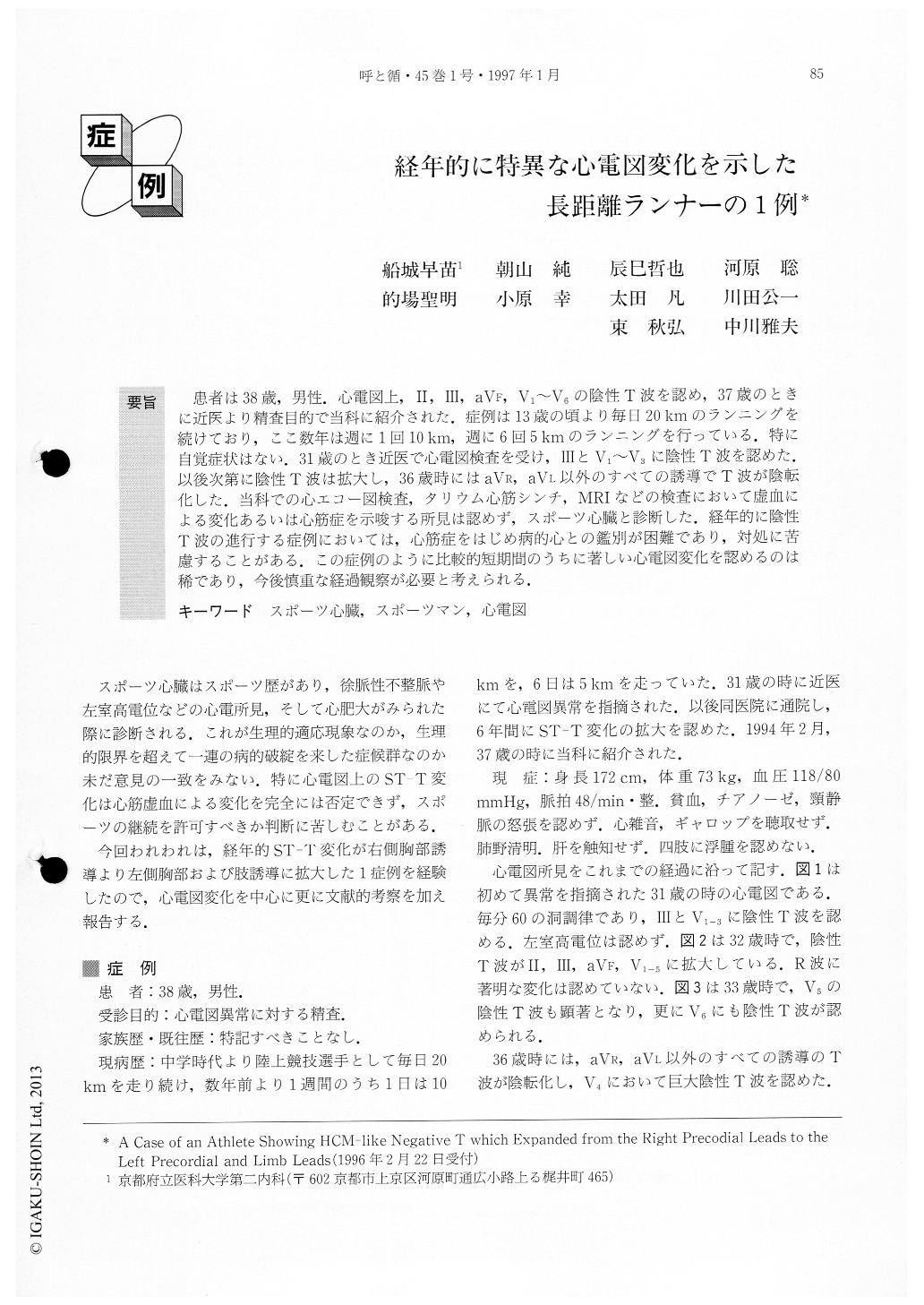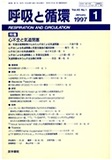Japanese
English
- 有料閲覧
- Abstract 文献概要
- 1ページ目 Look Inside
患者は38歳,男性.心電図上,II,III,aVF,V1〜V6の陰性T波を認め,37歳のときに近医より精査目的で当科に紹介された.症例は13歳の頃より毎日20kmのランニングを続けており,ここ数年は週に1回10km,週に6回5kmのランニングを行っている.特に自覚症状はない.31歳のとき近医で心電図検査を受け,IIIとV1〜V3に陰性T波を認めた.以後次第に陰性T波は拡大し,36歳時にはaVR,aVL以外のすべての誘導でT波が陰転化した.当科での心エコー図検査,タリウム心筋シンチ,MRIなどの検査において虚血による変化あるいは心筋症を示唆する所見は認めず,スポーツ心臓と診断した.経年的に陰性T波の進行する症例においては,心筋症をはじめ病的心との鑑別が困難であり,対処に苦慮することがある.この症例のように比較的短期間のうちに著しい心電図変化を認めるのは稀であり,今後慎重な経過観察が必要と考えられる.
A 38-year-old man was introduced to our department because of an abnormal ECG. The ECG displayed nega-tive T waves in leads of V1 to V6, II, III and aVF. He had enjoyed running for 20 km a day since the age of 13. Seven years ago, negative T waves in leads of V1 to V3 were first pointed out by his home-doctor. Six years ago, the negative T waves were recognized in leads of V1 to V5, II, III and aVF. MRI and UCG showed no evidence of HCM and exercise Tl-scintigram induced no ST-T changes in ECG or perfusion defect. Negative T waves in the left precordial leads have rarely been recognized in the heart of an athlete. This case is specific and very rare, since negative T waves expanded from the right precordial leads to the left precordial and limb leads over a period of 7 years. At the present time, we have diagnosed this case as athlete's heart. A careful follow-up study is needed to distinguish whether this is the initial stage of cardiomyopathy or sport induced-myocardial damage.

Copyright © 1997, Igaku-Shoin Ltd. All rights reserved.


